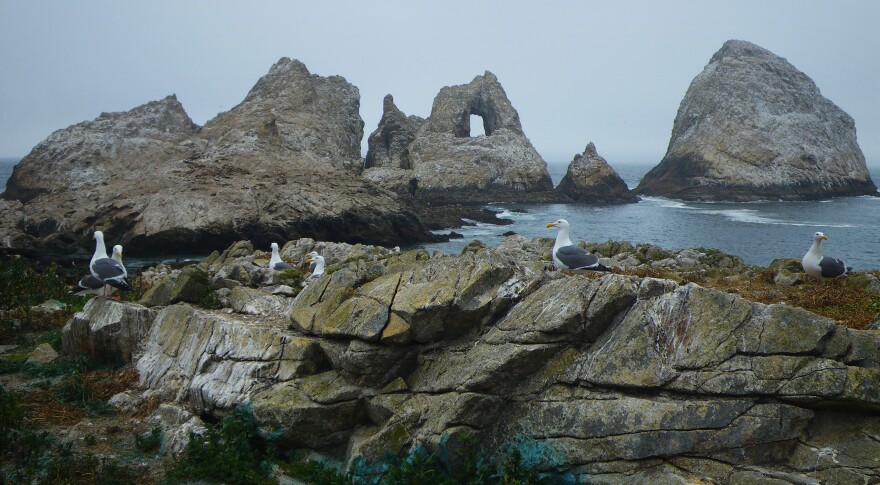To kick off our California island tour, this week we head up the road to visit the Farallon Islands some 30 miles west of San Francisco’s Golden Gate. These wild granite islands and sea stacks, distance geological relations of the Sierra Nevada, are also known by mariners as the Devil’s Teeth Islands, out of respect for their deadly shoals. Many ships have run aground in these unfriendly, roiling waters. Native Americans from around the Bay knew them as the Islands of the Dead, where the spirits of the dead could abide.
But life—abundant, wild, sea-going life—is the defining feature of the Farallon Islands, which Bay Area natives also knew.
The natural yet rare phenomenon of upwelling around the islands, with warm offshore winds drawing cold, nutrient-rich ocean water to the surface in spring, creates the phenomenal algae and plankton populations that support the feeding frenzies and breeding successes of seabirds and marine mammals further up the food chain.
Protected as the Farallon National Wildlife Refuge, the largest U.S. seabird rookery south of Alaska, these islands are one of the five most ecologically productive marine environments on earth, now part of an international UNESCO Biosphere Reserve. Some 948 square nautical miles of ocean from Bodega Head to Rocky Point are included in the Gulf of the Farallones National Marine Sanctuary, farallón meaning “sea cliff” or “pillar” en Español.
Strange as it seems, given that, on a crystal-clear day, you can barely see them from Point Reyes, 20 miles away, these islands are also included within the city and county of San Francisco.
Unless you’re a marine biologist or other relevant researcher, you cannot visit this part of the city, as in disembark, come ashore, and wander around. But you can visit by boat—which is just fine, to fully appreciate the wildlife here, and to do so with full respect.
This is not the way it’s always been here, people keeping a respectful distance.
First came assaults by sealers, fur trappers, whalers, and gill netters. Later there were bombers, toxic oil slicks, and, in the 1960s, radioactive waste dumping courtesy of the U.S. Atomic Energy Commission.
During and after the California Gold Rush, these islands were regularly invaded by eggers, who raided seabird nests to collect eggs and sell them to San Francisco grocers and restaurants as well as directly to miners. During the 1850s millions of eggs were harvested, as the euphemism goes, and rookery bird populations plunged. Only with the rise of nearby Petaluma’s chicken-and-egg industry could Farallon Islands seabirds nest easy again.
This summer and fall have been spectacular for wildlife and whale-watching at the Farallons. Huge schools of juvenile anchovies are calling in lunge-feeding humpback whales, fin whales, killer whales, probably blue whales too by now. Not to mention harbor porpoises, sea lions, and respectable populations of seabirds. The Oceanic Society, a nonprofit educational organization that offers dynamic, naturalist-guided Farallon boat tours, has added extra trips this fall aboard The Salty Lady. If you’re lucky you’ll land a seat. Bring the binoculars.





